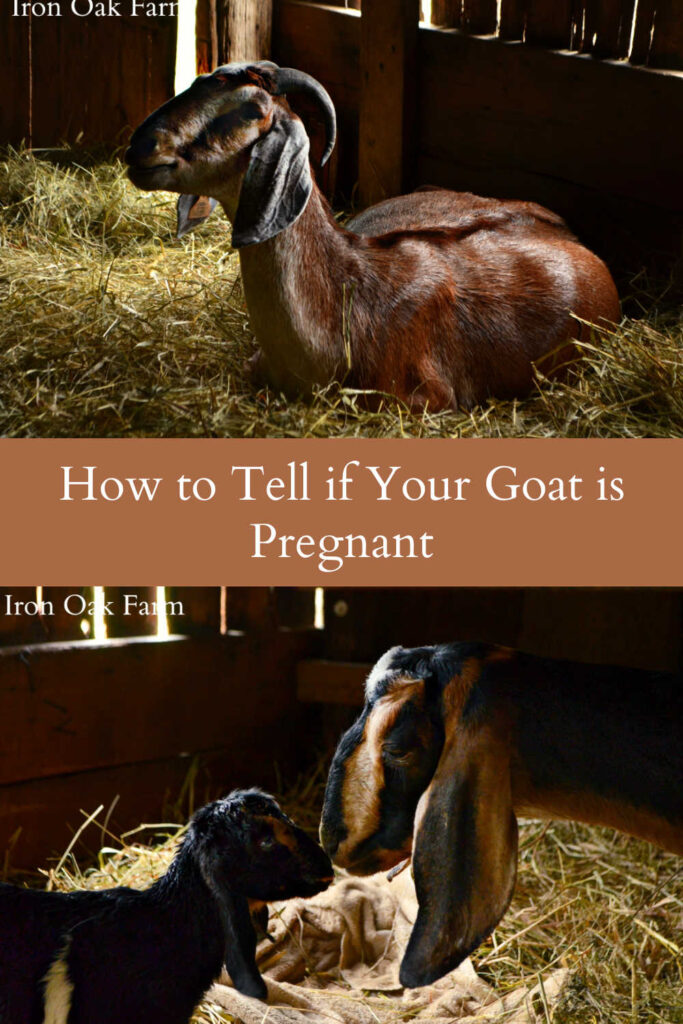How to Tell if Your Goat is Pregnant
Baby goat season is one of the most exciting times on our farm. From the moment we introduce our buck to our does, my thoughts are filled with spring babies and all the fun that comes with new life on our homestead. Because I know the frustration of not knowing, I wrote this post to share with you how to tell if your goat is pregnant. As you raise goats, you will become more and more familiar with what to look for and the signs will be easier to read.
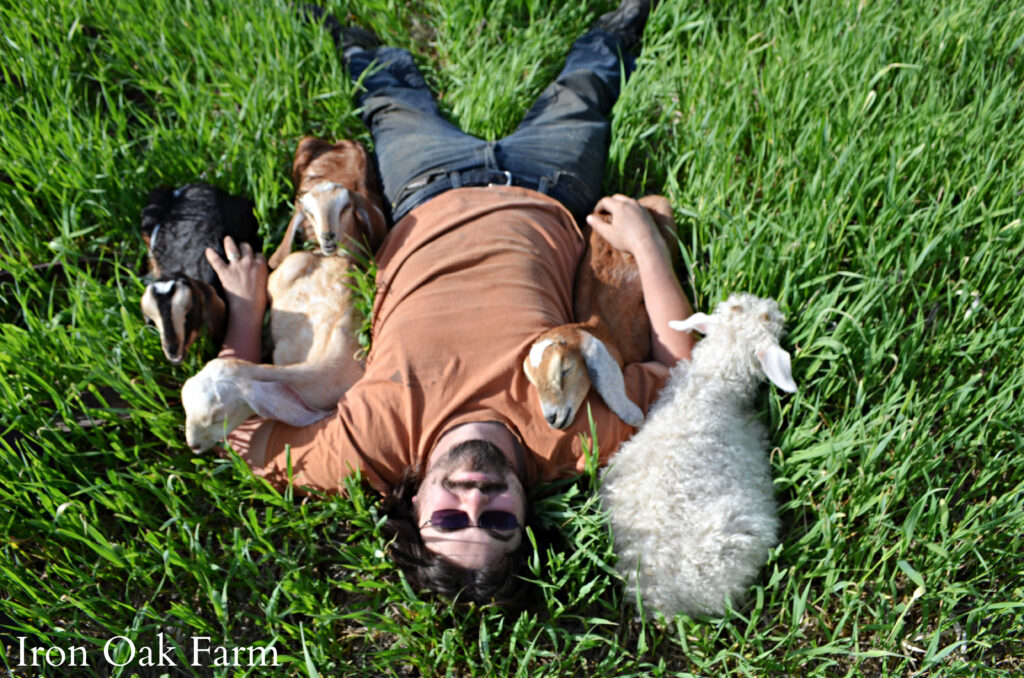


Some goats, especially first-timers are very subtle in showing signs of pregnancy. It can be hard to tell just by looking at them. The following should help to give you a good idea as to whether or not you'll be welcoming baby goats on your homestead this spring.
Goat pregnancy terms:
Settled doe- a doe that is pregnant
Open doe- a doe that is unbred
Estrus/heat- the period of time when a goat is fertile
Estrus Cycle/Heat Cycle- An 18-24 day cycle between times when your goat is fertile.
Rut- A time for male goats when they are especially willing to breed. This usually follows the female estrus cycle. (See my post Should I Keep a Goat Buck)
Gestation-The period of time that a goat is pregnant
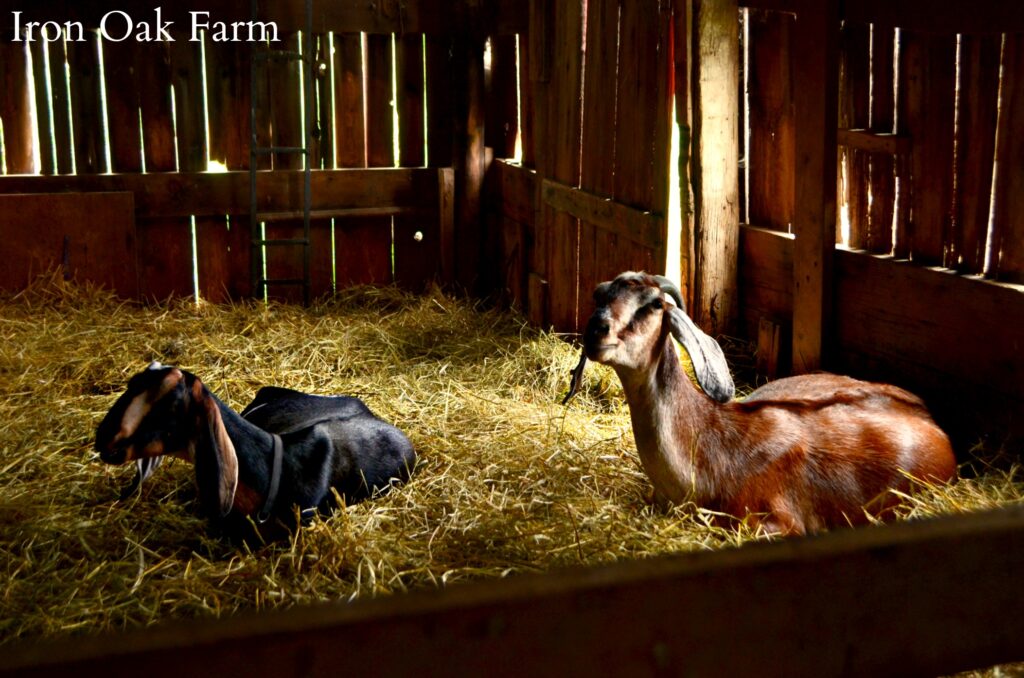


How long is a goat pregnant?
A goat's gestation period is around 150 days or 5 months.
Blood test to tell if your goat is pregnant
If you want to be absolutely sure your goat is pregnant you can do a blood draw and send it to a lab like Sage Labs. This is a simple, inexpensive procedure that I will be going over in a future post. You can also test for common diseases like CAE, CL, and Johnes in the same draw.
Early signs of goat pregnancy
Her abdomen tightens
Within 2-3 weeks the doe's abdomen will tighten. If you gently press a hand to her lower belly in front of her udders this area should feel tight like a drum. Allow the doe to relax, because they will sometimes tighten their stomach in response to being touched in an unfamiliar way. This area will feel soft in a doe that is not pregnant. I recommend that you feel this area on your doe before she is exposed to a buck so you get familiar with what it feels like, then you will better recognize a change.



She won't return to a heat cycle
A goat goes into heat every 18-24 days. If she is successfully bred, her next heat will be weaker or non-existent. She will lose interest in the buck.
The buck will lose interest in her
Goat romance is very fleeting. If she is settled, the buck will lose interest in her and may even show signs of aggression or bossiness.
Her personality can change
An otherwise cuddly goat may become more standoffish. And the reverse can happen as well. A normally standoffish goat may be asking for extra scratches and attention. This usually lasts the length of the pregnancy.



Her appetite will increase
You may see your doe at the hay stand more often. She may also become more defensive of food, butting others away from the manger until she's had her fill.
She appears rounder
Especially in younger does, their abdomen will begin rounding out. Some of our young does look like a barrel on legs in their pregnancy. Older does will carry lower. Their bellies will hang and their hips appear thinner as gravity pulls the skin down under them.



Udder formation
You will notice changes in her udder. The teats will begin to plump and may lengthen and her udders will swell and tighten.



Later signs of Goat Pregnancy
Her shape will change
Some goats, especially small breeds will appear as though two basketballs are on either side of them. Our Nubians are more subtle in their pregnancies. As the pregnancy advances the right side will extend further than the left. As the babies get bigger her uterus will push out the rumen on the left side and she will appear rounded on both sides. Her back will also flatten with the weight of the babies and her hips will appear pointer and pointer.
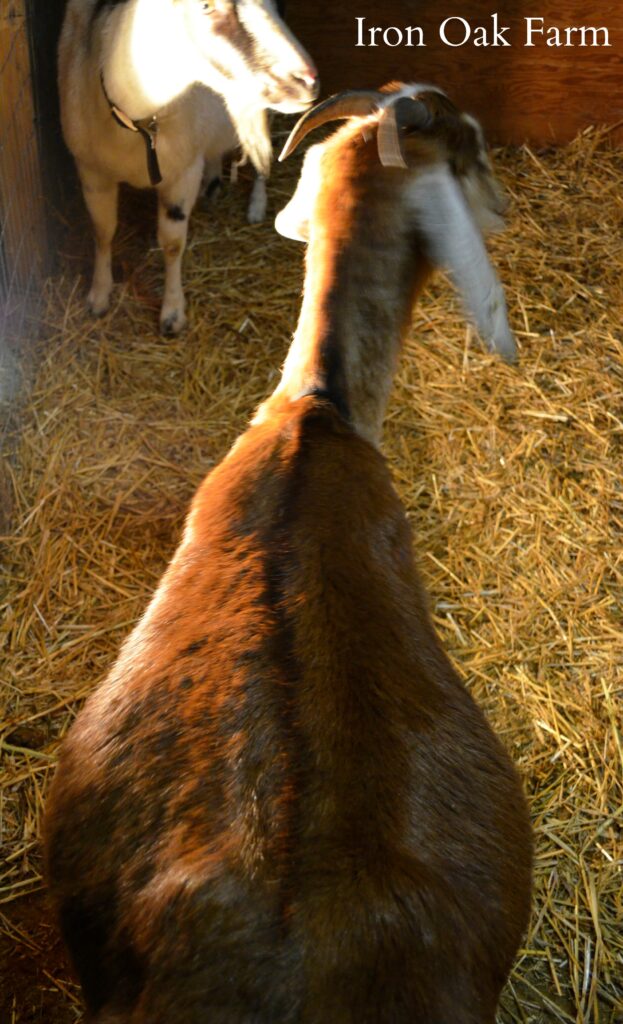


Her udders will fill
First-time does will often continue to form their udders throughout the entire pregnancy. You will see noticeable changes as she gets closer to her time. Older does will fill up later and quicker in the pregnancy.
Grunting and Snoring
A heavily pregnant doe will often grunt as she is laying. It's a repeated grunt that usually comes with each exhale and can last for long periods of time. She might also snore while she sleeps.
You can feel the babies!
At around 3 and a half months, if you place a hand on her lower right side in front of the back leg and gently push, you may feel a nose or a hoof push back. This is one of my favorite things to experience! It never gets old!
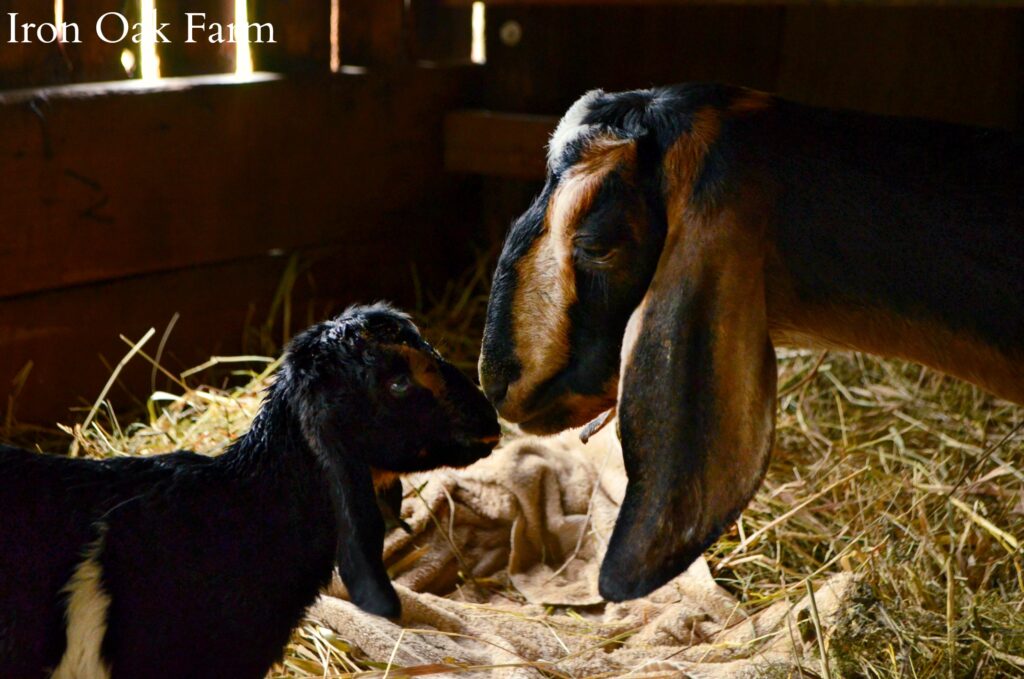


I will be writing a future post on How to Tell if Your Goat is in Labor.
Pin it for later!
